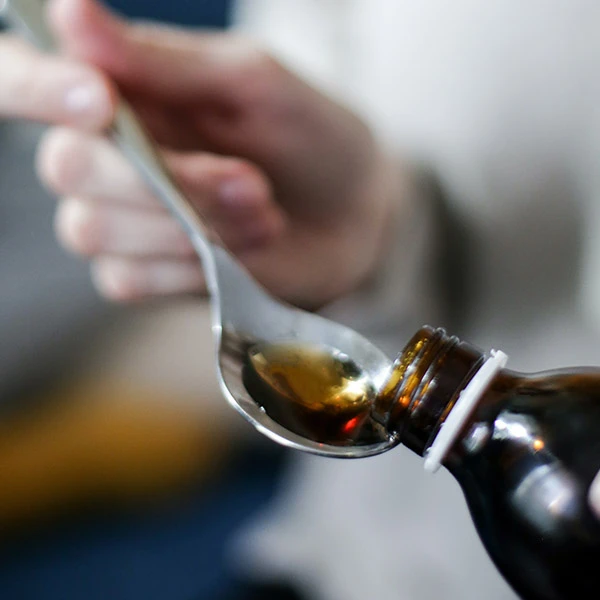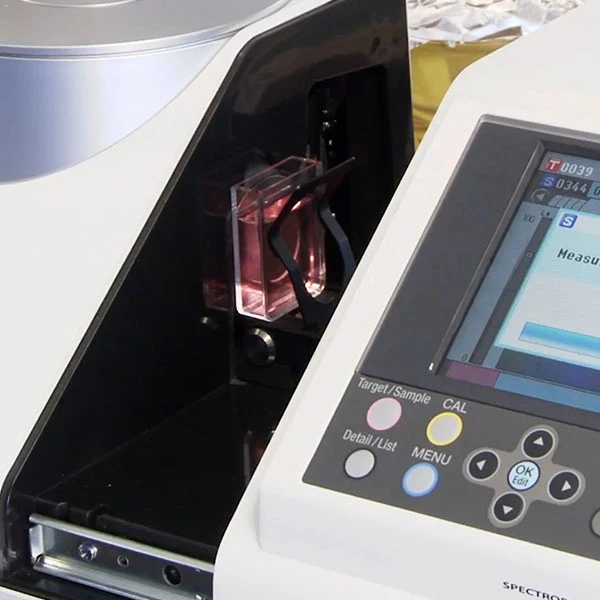การวัดสีและความโปร่งใสของยาชนิดที่เป็นน้ำ

อุตสาหกรรมยาได้รับการควบคุมอย่างเข้มงวดและต้องผ่านการทดสอบที่เข้มงวดเพื่อความปลอดภัยและข้อกำหนดด้านคุณภาพตามที่ตั้งใจไว้ และการวัดสีเป็นส่วนหนึ่งของขั้นตอนการทดสอบ
ยาที่ผลิตในยุโรป (EP) และสหรัฐอเมริกา (USP) มีการแยกสีเป็นสองระดับที่ใช้กันทั่วไปในการประเมินและเพื่อสื่อสารสีของยาที่เป็นของเหลว โดยทั่วไปแล้ว ทั้งระดับสี EP และ USP จะขึ้นอยู่กับการมองเห็นของมนุษย์ด้วยความช่วยเหลือของโซลูชันสีในเปรียบเทียบ วิธีการมองเห็นมักมีข้อจำกัดเนื่องจากมีแนวโน้มที่จะเกิดข้อผิดพลาดของมนุษย์ในการรับรู้และอธิบาย
สำหรับเภสัชภัณฑ์ที่เป็นของเหลวและมีความโปร่งใส มักขาดความชัดเจนอาจและบ่งบอกถึงสูตรหรืออากทำให้บอกลักษณสีที่ไม่ถูกต้อง เช่น ความไม่สม่ำเสมอของสารหรือการละลายที่ไม่สมบูรณ์ การใช้งานของCIE L*B*A*ปริภูมิสีสามารถช่วยให้ผู้ผลิตยาระบุปัญหาล่วงหน้าและดำเนินการแก้ไขได้ทันที เน้นที่พารามิเตอร์ L* และยิ่งค่า L* สูงเท่าใด ความชัดเจนก็จะยิ่งดีขึ้นเท่านั้น

เมื่อพยายามวัดสีของยาเหลว เครื่องมือวัดสีเช่นสเปกโตรโฟโตมิเตอร์ CM-5สามารถช่วยให้ผู้ผลิตยาบรรลุข้อกำหนดด้านคุณภาพที่ต้องการได้
CM-5 ซึ่งมาพร้อมกับปริภูมิสี CIE L*a*b* และดัชนี EP และ USP ช่วยให้ผู้ใช้สามารถวัดสียาชนิดที่เป็นน้ำได้อย่างแม่นยำและทำการวัดซ้ำๆได้อย่างแม่นยำ นอกจากนี้ยังมีดัชนีสีมาตรฐานอุตสาหกรรมอื่นๆ และระบบการวัดสีหลักๆ เช่น APHA/Hazen, Gardner Index และ L*A*B*
นอกเหนือจากของเหลวแล้ว CM-5 ยังสามารถรองรับการตรวจวัดตัวอย่างได้หลากหลาย รวมถึงของแข็ง เม็ดเล็กยาเม็ดชนิดผงและชนิดที่เป็นน้ำ
วิดีโอเพื่อดูข้อมูลเพิ่มเติมเกี่ยวกับความอเนกประสงค์และความเรียบง่ายของ CM-5
หากต้องการความช่วยเหลือเกี่ยวกับด้านสีของยา สามารถติดต่อผู้เชี่ยวชาญด้านการใช้สีของเราเพื่อรับคำปรึกษาและความช่วยเหลือฟรี
